I am trying to apply the dist() function row wise in R but the result I get is as if it isn't grouping at all, it is simply applying dist() to all of my dataframe.
df2 %>% dplyr::group_by(X1) %>% dist()
Where df2 is my dataframe and I am just applying to the head for now, for simplicity. Essentially, each group contains coordinates (A,B) and I am trying to get the distance between each point.
Here is my dataframe:
X1 A B
1 1 12 0.0
2 1 18 0.0
3 1 18 1.0
4 1 13 0.0
5 1 18 4.0
6 1 18 0.0
7 1 18 5.0
8 1 18 0.0
9 1 18 0.0
10 2 73 -2.0
11 2 73 -0.5
12 2 74 -0.5
13 2 73 0.0
14 2 71 -1.0
15 2 75 0.0
My desired output is the lower triangular matrix of each group, here is an example:
